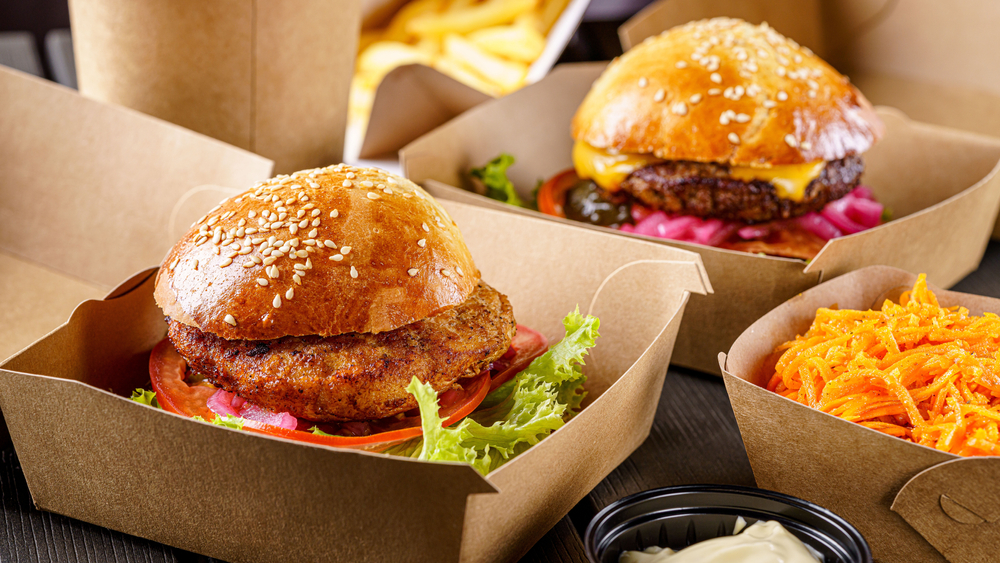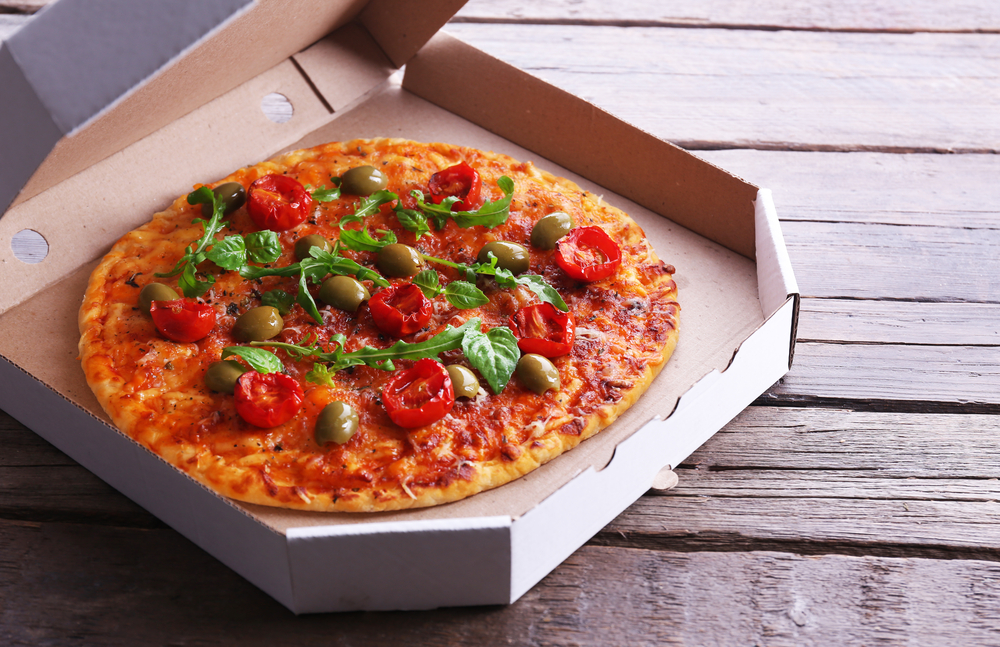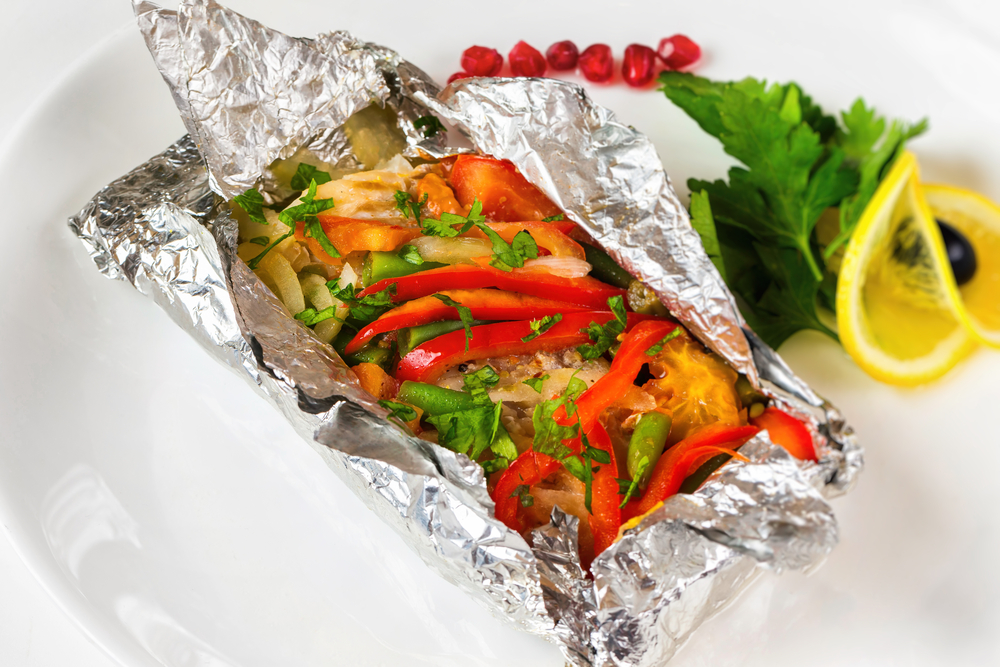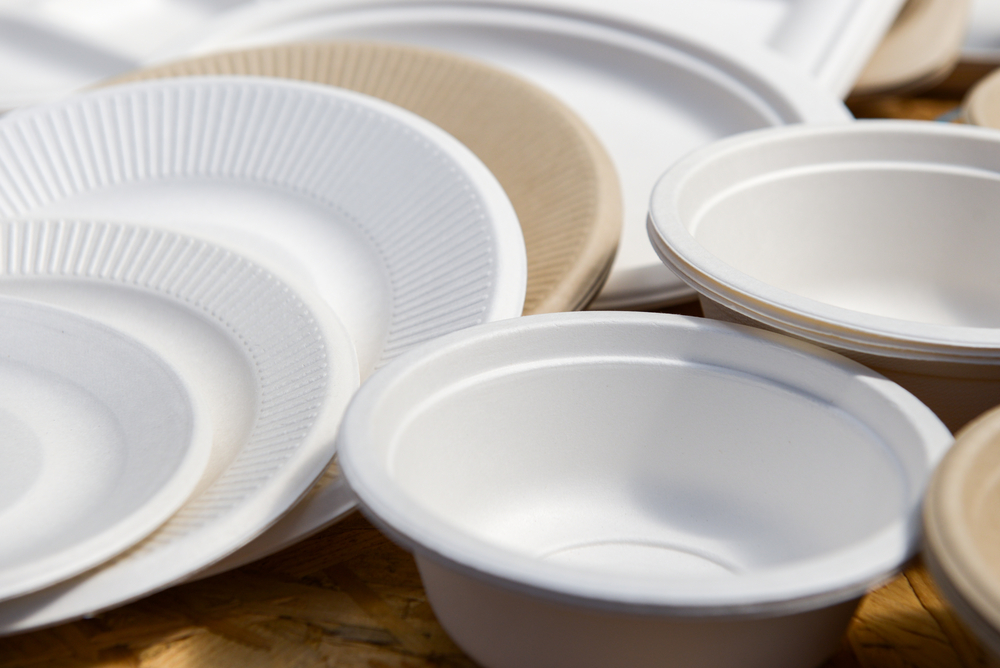Can you put cardboard in the microwave? It’s a common question that many people have when they’re reheating food or trying to cook something quickly.
The answer is not a simple yes or no. While technically, you can put cardboard in the microwave, it’s not always safe to do so.
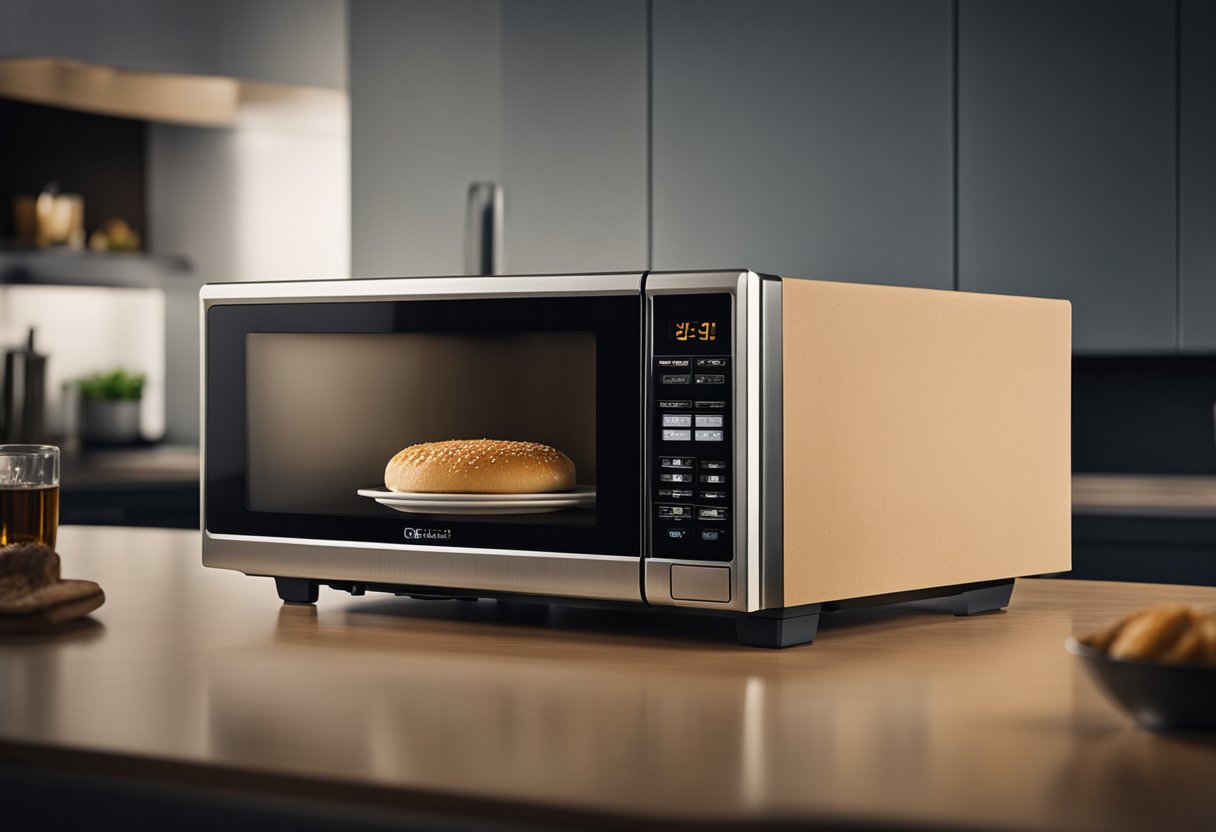
Understanding microwaves is important when considering whether or not to put cardboard in the microwave.
Microwaves work by heating up water molecules in food, causing them to vibrate and generate heat. However, cardboard is not a good conductor of heat, and it can catch fire if it gets too hot.
Additionally, cardboard can contain chemicals and other materials that can be harmful when heated in the microwave.
Key Takeaways:
- While technically you can put cardboard in the microwave, it’s not always safe to do so.
- Cardboard can contain chemicals and other materials that can be harmful when heated in the microwave.
- It’s best to use microwave-safe cardboard or alternative materials when reheating food or cooking in the microwave.
Understanding Microwaves
As someone who regularly uses a microwave, it’s important to understand how it works. Microwaves use a form of electromagnetic radiation to heat food.
This radiation is in the form of waves, which have a frequency of 2.45 GHz. When microwaves are emitted, they cause water molecules in the food to vibrate, which generates heat and cooks the food.
It’s important to note that not all materials are safe to use in the microwave. Some materials, such as metal, can reflect the microwaves and cause sparks, which can be dangerous.
Other materials, such as plastic, can melt and release harmful chemicals into your food.
When it comes to cardboard, it’s important to check if it is microwave-safe before using it. If the cardboard is pure cellulose, then it is safe to use in the microwave for short periods of time.
However, if the cardboard has a thin layer of plastic or wax on the surface, it is not safe to use in the microwave. This coating can melt or catch fire when exposed to heat.
It’s also important to avoid overheating cardboard in the microwave. Overheating can cause the cardboard to ignite and cause a fire.
To avoid this, it’s recommended to keep the microwave on a low power setting and to check the cardboard every 30 seconds to reduce the risk of overheating.
In summary, microwaves use electromagnetic radiation to heat food by causing water molecules to vibrate.
Not all materials are safe to use in the microwave, including cardboard that has a plastic or wax coating.
It’s important to check if the cardboard is microwave-safe and to avoid overheating it to reduce the risk of fire.
Cardboard and Its Composition
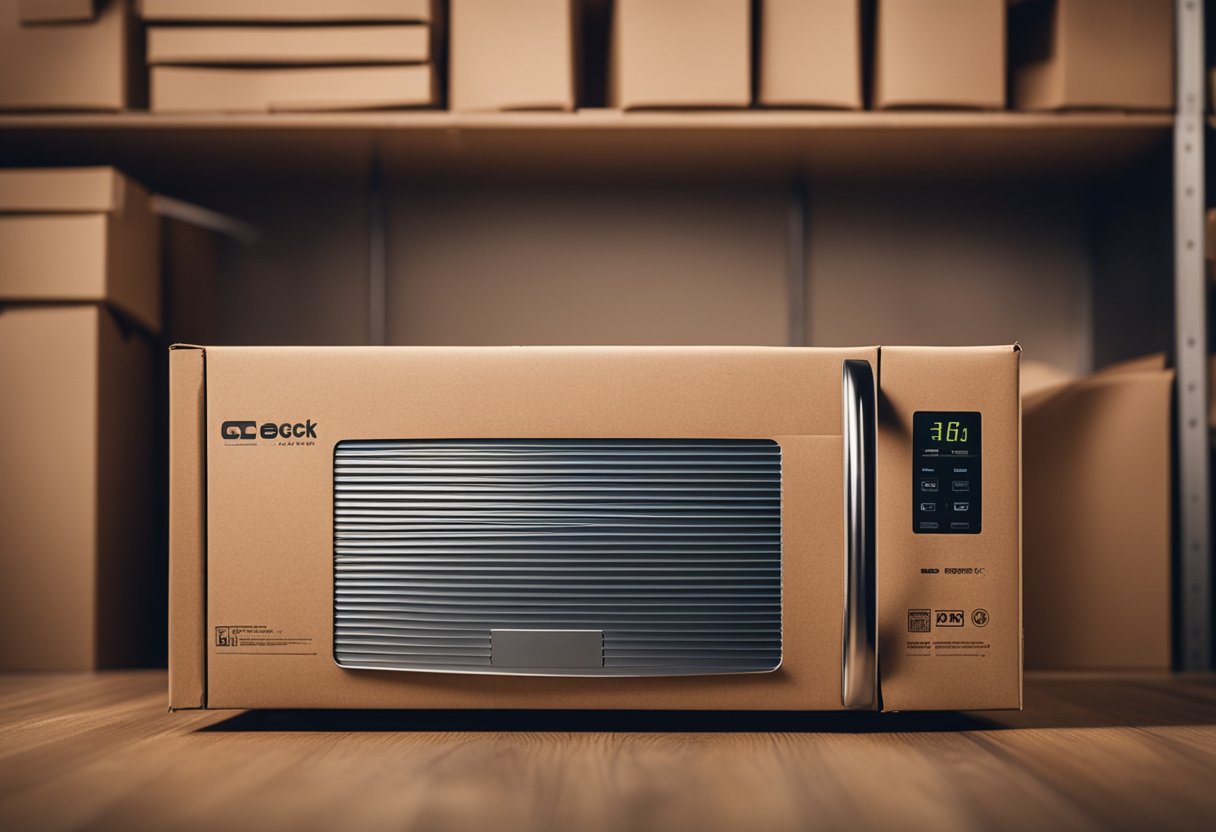
Cardboard is a paper-based material that is commonly used for packaging and shipping. It is made from a combination of cellulose fibers, glue, and other materials that can affect its safety when used in a microwave.
There are several types of cardboard, and not all of them are safe to use in a microwave. Cardboard that has glue or another adhesive can release chemicals into your food.
Similarly, cardboard that has ink printed on it can also release chemicals into your food. C
ardboard that has a wax or plastic coating can also be unsafe to use in a microwave, as these coatings can melt and contaminate your food.
It is important to note that some cardboard containers may also have metal or plastic parts, such as staples or handles, that can cause a fire or spark in the microwave.
Therefore, it is crucial to check the packaging and make sure it is safe to use in the microwave before heating up your food.
In general, plain, uncoated cardboard that is free from metal parts can be safely used in the microwave.
However, it is important to follow specific guidelines to ensure safety. For example, you should avoid microwaving cardboard for long periods of time or at high temperatures, as this can cause the cardboard to dry out and potentially catch fire.
Overall, it is important to be aware of the composition of the cardboard container before using it in the microwave.
By following specific guidelines and being mindful of the potential risks, you can safely use cardboard containers for heating up your food in the microwave.
Microwaving Cardboard: The Risks
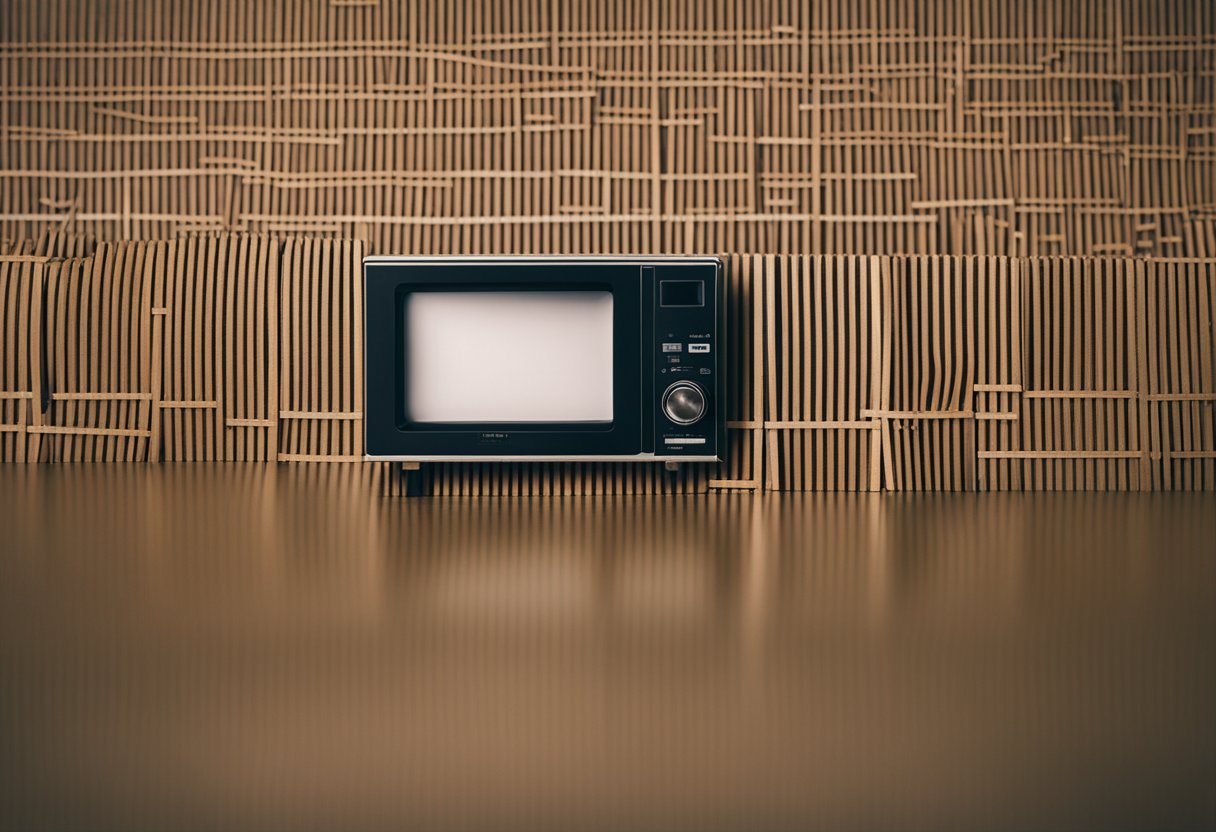
As someone who has worked in the food industry for years, I know that microwaving cardboard is a common practice.
However, there are some risks associated with microwaving cardboard that you should be aware of.
Firstly, cardboard is a combustible material that can catch on fire if heated for too long or at too high a temperature.
This is because the moisture level in the cardboard drops, making it more likely to ignite. If you must microwave cardboard, it is important to keep a close eye on it and remove it immediately if you notice any signs of overheating.
Additionally, microwaving cardboard can release toxic fumes, especially if the cardboard has been treated with chemicals or has any metallic elements.
These fumes can be harmful to your health, so it is best to avoid microwaving cardboard altogether.
If you must microwave cardboard, it is important to check for any metals, such as staples or foil, that could cause a fire hazard.
Only microwave cardboard packages that state they are “microwave safe” and follow any instructions on the label for safe use.
In conclusion, while it is technically possible to microwave cardboard, it is a risky practice that should be avoided whenever possible.
If you must use cardboard in the microwave, be sure to follow all safety guidelines and keep a close eye on the cardboard to prevent any accidents.
Types of Cardboard Containers
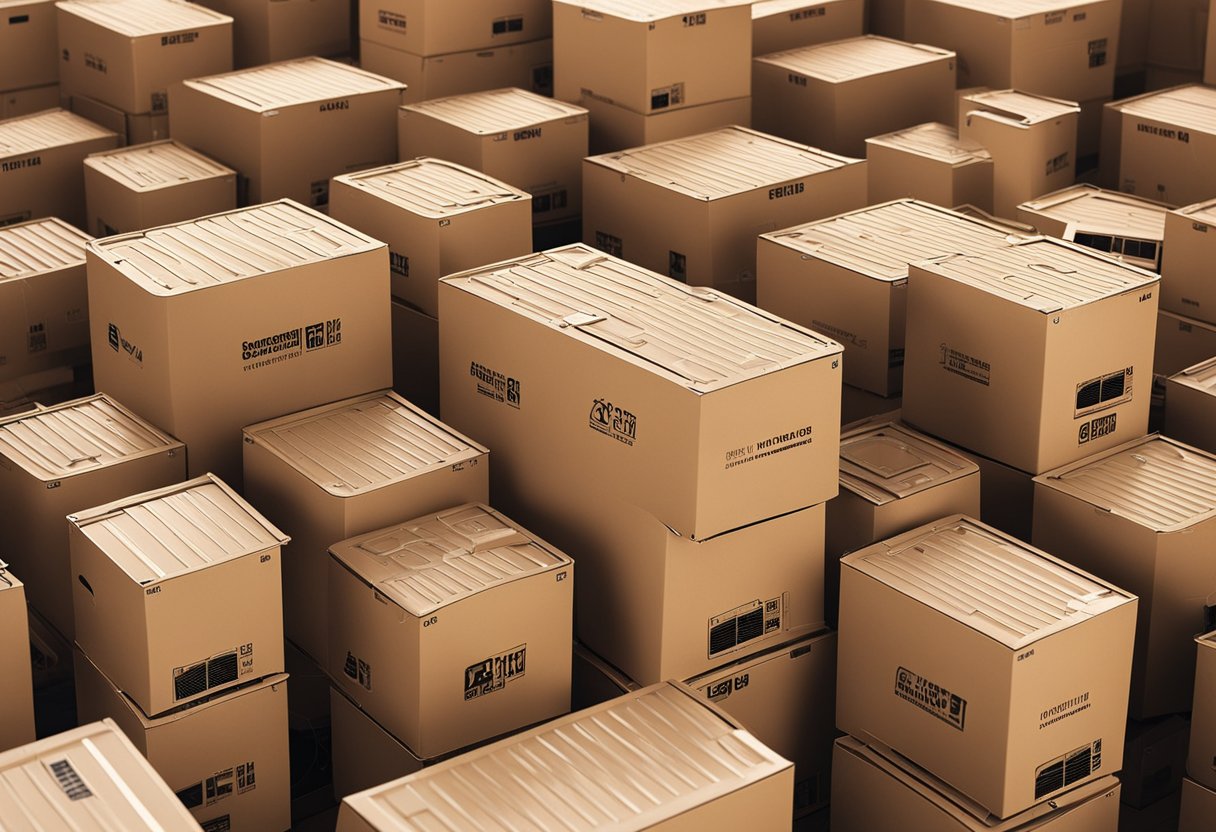
When it comes to microwaving cardboard containers, not all are created equal. Some cardboard containers can be microwaved safely, while others can release harmful chemicals into your food.
Here are some common types of cardboard containers and whether or not they can be microwaved:
- Pure Cardboard Food Containers: These are typically cardboard containers without any plastic coatings. According to Savor + Savvy, pure cardboard food containers can be microwaved as long as they contain food or liquid and do not contain metal, glue, certain types of ink and dyes, wax coating, or plastic.
- Cardboard Pizza Boxes: According to HomelyVille, cardboard pizza boxes can be microwaved as long as they do not contain any metal, plastic, or wax coating. However, it’s important to note that pizza boxes can absorb grease and bacteria, so it’s best to transfer the pizza to a microwave-safe plate before reheating.
- Cardboard Takeout Boxes: Cardboard takeout boxes can be tricky. According to Taste of Home, cardboard takeout boxes that have glue or another adhesive should not be microwaved, as this can release chemicals into your food. Additionally, cardboard takeout boxes that have ink printed on them can also release harmful chemicals into your food. If you’re unsure whether or not your cardboard takeout box is safe to microwave, it’s best to transfer the food to a microwave-safe container.
- Cardboard Takeout Containers: Similar to cardboard takeout boxes, cardboard takeout containers can also be tricky. According to Foods Guy, cardboard takeout containers that are made from pure cardboard and do not contain any plastic or wax coating can be microwaved as long as they contain food or liquid and do not contain metal, glue, certain types of ink and dyes, or plastic.
In summary, not all cardboard containers are safe to microwave. It’s important to check whether or not your cardboard container contains any harmful chemicals or coatings before microwaving it.
When in doubt, it’s best to transfer the food to a microwave-safe container.
Microwave-Safe Cardboard
As I researched whether cardboard can be put in the microwave, I came across the term “microwave-safe cardboard.”
This term refers to cardboard that is safe to use in the microwave. But what makes cardboard microwave-safe?
Microwave-safe cardboard is made of pure cellulose, which is a type of plant material. This means that it does not contain any chemicals or other substances that could be harmful when heated in the microwave.
You can identify microwave-safe cardboard by looking for a label that says “microwave-safe” or “microwaveable.”
When using microwave-safe cardboard, it is important to follow some guidelines to ensure that it does not overheat or catch fire.
It is recommended to microwave it for short periods of time, between 60 and 120 seconds, and to check it every 30 seconds.
It is also important to keep the microwave on a low power setting to reduce the risk of overheating.
It is worth noting that not all types of cardboard are microwave-safe. Cardboard that contains plastic coatings, metal, glue, certain types of ink and dyes, wax coating, or plastic should not be used in the microwave.
These materials can melt, release harmful chemicals, or even catch fire when heated in the microwave.
In summary, microwave-safe cardboard is safe to use in the microwave as long as it is made of pure cellulose and does not contain any harmful substances.
When using it in the microwave, it is important to follow the recommended guidelines to avoid overheating or causing a fire.
Alternatives to Cardboard in the Microwave
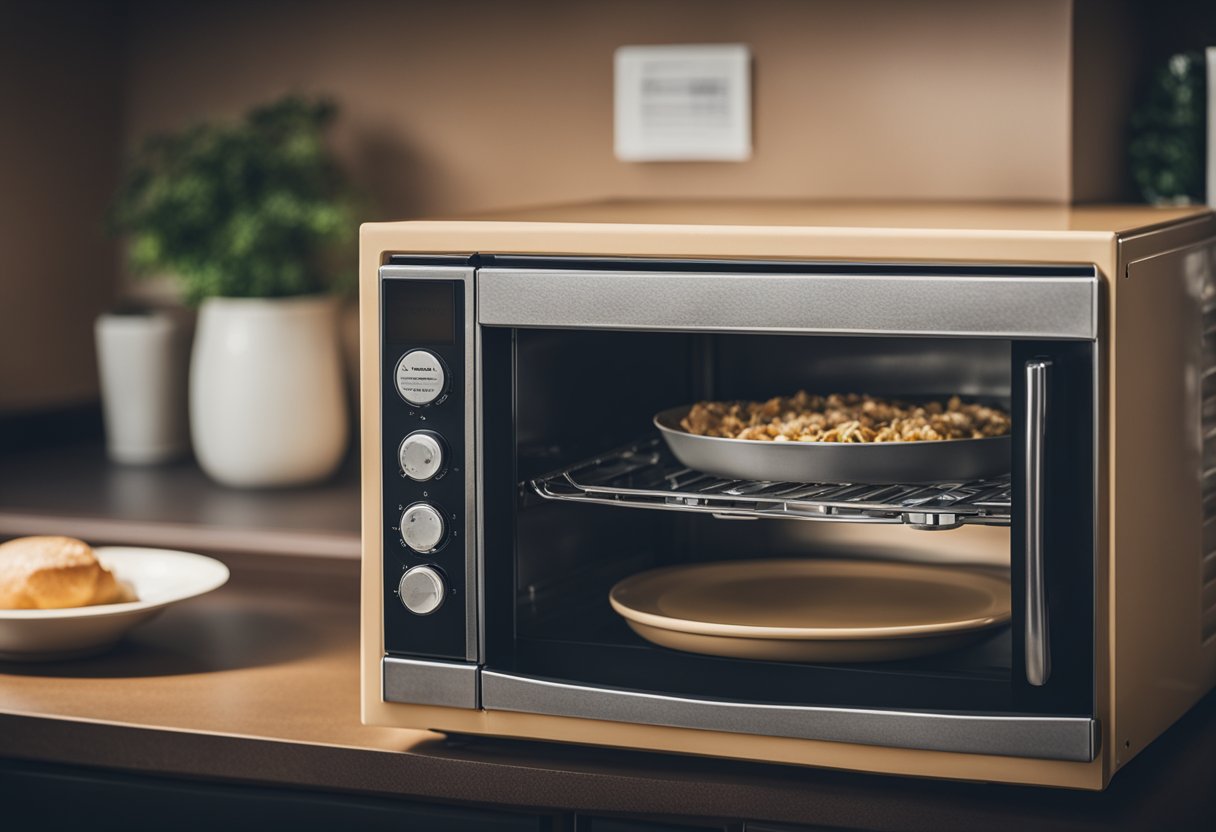
As we have seen, microwaving cardboard can be risky. But fear not, there are plenty of alternatives to cardboard that you can use in the microwave.
In this section, I will discuss some of the most popular options.
Paper Plates and Paper Towels
Paper plates and paper towels are a great alternative to cardboard when it comes to microwaving food. They are disposable, affordable, and widely available.
However, it is important to note that not all paper plates and paper towels are microwave safe. Look for products that are labeled as microwave safe.
Plastic Bags and Plastic Containers
Plastic bags and plastic containers are another option for microwaving food. However, it is important to choose the right type of plastic.
Look for containers that are labeled as microwave safe. Avoid using containers that are not meant for microwaving as they can release harmful chemicals into your food.
Styrofoam Containers
Styrofoam containers are a popular choice for takeout food, but they are not recommended for microwaving.
Styrofoam can release harmful chemicals into your food when heated. It is best to transfer your food to a microwave-safe container before heating it.
Aluminum Foil and Tinfoil
Aluminum foil and tinfoil are not recommended for microwaving. They can cause sparks and potentially start a fire. It is best to avoid using these materials in the microwave altogether.
In conclusion, there are many alternatives to cardboard that you can use in the microwave. Paper plates, paper towels, plastic bags, plastic containers, and microwave-safe glass containers are all great options.
However, it is important to always follow the manufacturer’s instructions and make sure that the materials you are using are microwave safe.
Safe Microwaving Practices
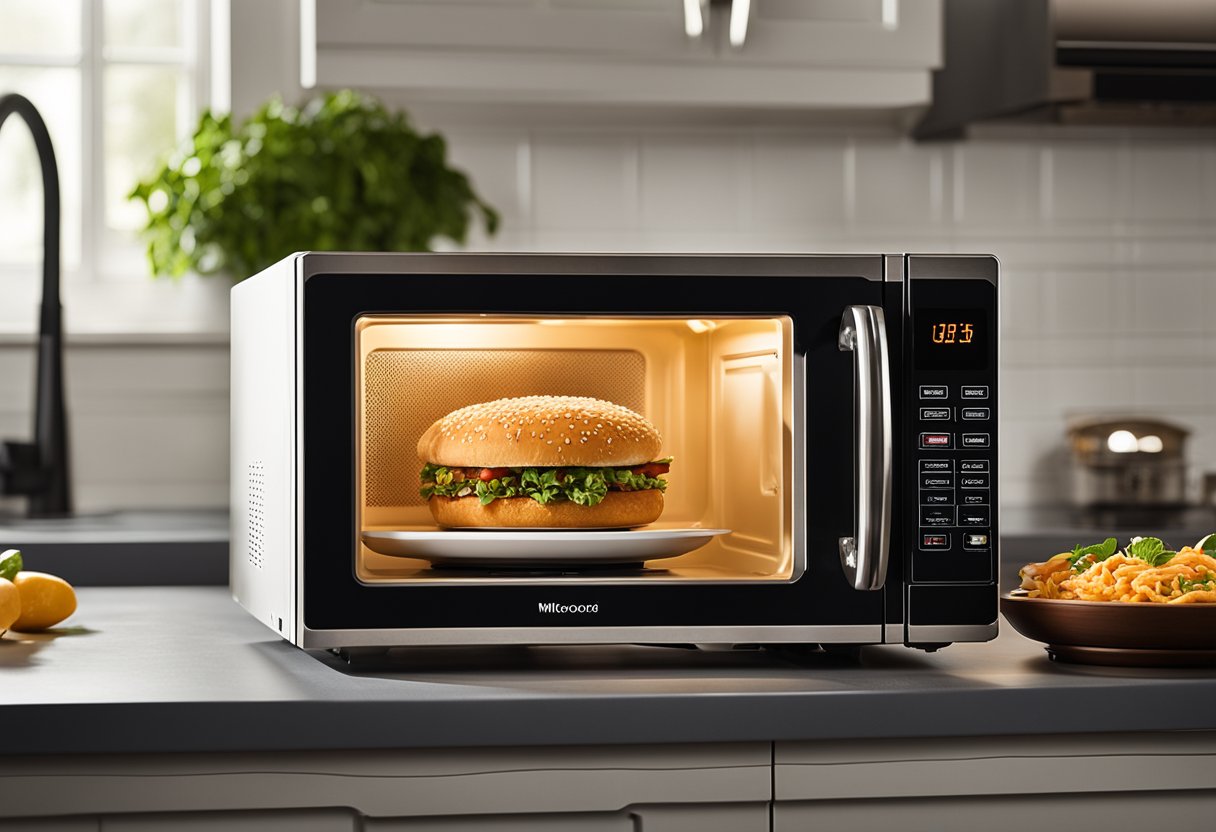
When it comes to microwaving cardboard, it is important to prioritize safety. While it is possible to microwave cardboard safely, it is crucial to take the necessary precautions to avoid any potential hazards.
One of the most important things to keep in mind when microwaving cardboard is to use a low power setting.
This will help to reduce the risk of overheating the cardboard and causing it to release chemicals or create sparks. Additionally, it is important to never leave the microwave unattended while it is in use.
Before microwaving food in cardboard, it is important to check the labels on the packaging to ensure that it is safe for microwave use.
If the packaging does not have a microwave-safe label, it is best to avoid using it in the microwave altogether.
When heating food in cardboard, it is important to make sure that the food is evenly distributed throughout the container.
This will help to ensure that the food is heated evenly and that there are no hot spots that could cause the cardboard to overheat.
Overall, by following these safe microwaving practices, it is possible to microwave cardboard safely and avoid any potential hazards.
Conclusion
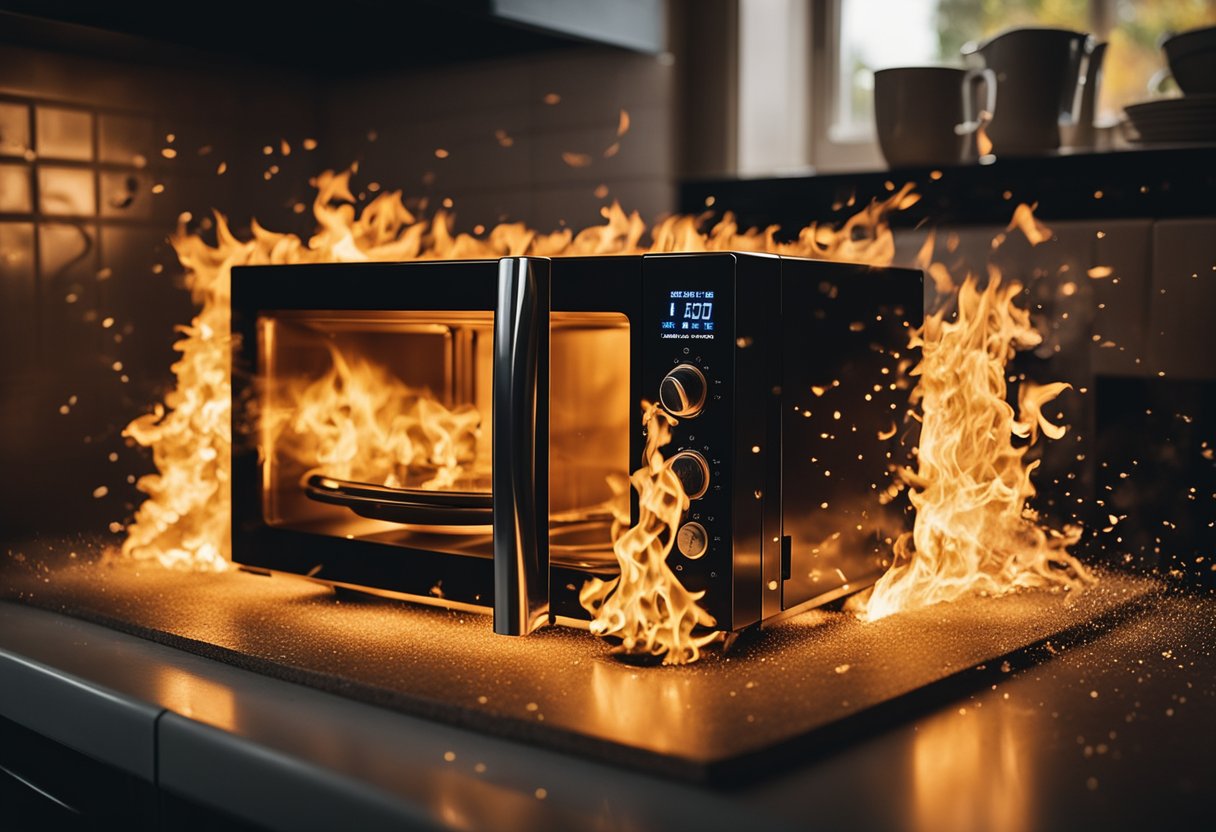
In conclusion, the question “can you put cardboard in the microwave?” doesn’t have a straightforward answer.
While it is generally not recommended to microwave cardboard, there are certain circumstances where it can be done safely.
It is important to note that not all cardboard is created equal. Some cardboard containers, such as those used for frozen foods or microwaveable meals, are specifically designed to be microwaved.
These containers are often labeled as “microwave-safe” and have been tested to ensure that they will not release harmful chemicals or catch fire when heated in the microwave.
However, if you are unsure whether a cardboard container is safe to microwave, it is best to err on the side of caution and avoid putting it in the microwave.
Microwaving non-microwave-safe cardboard can cause it to release harmful chemicals or catch fire, which can be dangerous.
Additionally, it is important to note that even microwave-safe cardboard can become hot and potentially cause burns when removed from the microwave.
Always use caution when handling hot containers, and allow them to cool before touching or opening them.
Overall, while it is technically possible to microwave cardboard in certain circumstances, it is best to use caution and only microwave cardboard containers that are specifically labeled as microwave-safe.
Frequently Asked Questions
Can you microwave cardboard cups?
No, it is not safe to microwave cardboard cups. Even though they are made of cardboard, they are usually lined with a thin layer of plastic or wax to prevent liquids from leaking.
The high temperature of the microwave can melt the plastic or wax, which can contaminate the food or drink and cause health problems.
Can I put a cardboard box in the microwave?
No, it is not safe to put a cardboard box in the microwave. Cardboard is made of paper, and paper can easily catch fire when exposed to high temperatures.
Microwaving a cardboard box can cause it to ignite, which can start a fire and cause damage to your microwave and your home.
Is it safe to put paper in the microwave?
It depends on the type of paper. Plain white paper towels, napkins, and parchment paper are safe to use in the microwave.
However, paper products that are printed or have any kind of decoration, such as wrapping paper or newspaper, should not be microwaved because the ink and other chemicals can release harmful fumes.
What can’t go in the microwave?
There are several items that should not be microwaved, including aluminum foil, metal utensils, and anything with a metallic finish.
Additionally, anything made of plastic that is not labeled as microwave-safe should not be microwaved. Styrofoam is also not safe to microwave as it can melt and release harmful chemicals.
Can you microwave plastic?
It depends on the type of plastic. Some plastics are microwave-safe and can be used in the microwave, while others are not.
Look for the microwave-safe symbol on the bottom of the container or check the manufacturer’s instructions. If the plastic is not labeled as microwave-safe, do not use it in the microwave.
Can you microwave Styrofoam?
No, it is not safe to microwave Styrofoam. Styrofoam is a type of plastic that can melt and release harmful chemicals when exposed to high temperatures.
It is best to transfer the food or drink to a microwave-safe container before heating it in the microwave.


